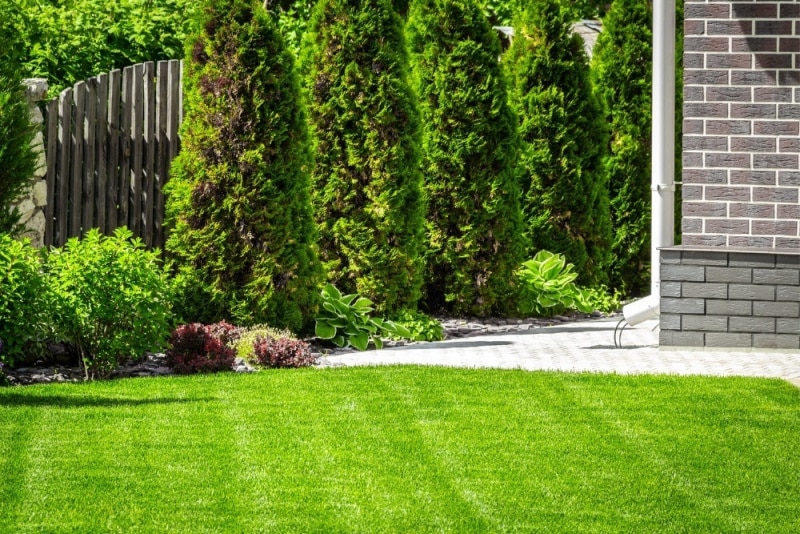How Fort Worth’s Climate Affects Lawn Maintenance Needs Year-Round
Fort Worth has its personality when it comes to weather. It’s hot in the summer, cooler in the winter, and unpredictable in between. If you live here, you’ve probably noticed how much the weather can affect your lawn’s look and health. What works in one season might harm your grass in another.

That’s why understanding how Fort Worth’s climate shapes lawn care needs is important if you want your yard to stay green and healthy. Let’s walk through the seasons and how each one influences what your lawn needs—and what you should avoid.
Spring (March to May): Waking the Lawn Back Up
Spring in Fort Worth starts out cool but warms up quickly. Average high temperatures range from the upper 60s in March to mid-80s by May. This is the time when grass breaks dormancy and weeds start popping up.
What Your Lawn Needs in Spring:
- Pre-emergent weed control: Get ahead of crabgrass, spurge, and other annual weeds with a pre-emergent treatment by early March.
- Fertilizer: Apply a balanced fertilizer around mid to late March to give your grass a boost.
- Aeration: Core aeration helps loosen compacted soil from winter and gives roots room to grow.
- First mow of the year: Start mowing once the grass is actively growing. Set your mower to a higher height to avoid scalping it.
Things to Avoid:
- Mowing too early before the grass is fully active can damage the turf.
- Overwatering—spring rains usually provide enough moisture.
Summer (June to August): High Heat and Stress Season
Fort Worth summers are hot and dry, with average highs in the 90s and frequent stretches above 100°F. Your lawn will face heat stress, drought, and possibly water restrictions.
What Your Lawn Needs in Summer:
- Proper mowing height: Keep the grass a little taller—about 2 to 3 inches depending on your grass type. This shades the soil and helps retain moisture.
- Deep but infrequent watering: Watering 1 to 1.5 inches per week is ideal, either from rainfall or irrigation. Do it early in the morning to reduce evaporation.
- Watch for pests: Chinch bugs and grubs are active during summer months and can damage your lawn fast.
Things to Avoid:
- Don’t fertilize in the peak of summer heat. It can burn your lawn.
- Avoid mowing during the heat of the day. It’s harder on you and the grass.
Fall (September to November): Recovery and Preparation
Fall in Fort Worth is warm at first, but temperatures gradually drop into the 60s by November. It’s a great time for recovery and prepping your lawn for winter.
What Your Lawn Needs in Fall:
- Fertilizer: Apply a fall fertilizer in late September or early October to strengthen roots.
- Overseeding (if needed): If your lawn has bare spots or thinning grass, overseeding now helps it fill in before winter.
- Continue mowing: Don’t stop mowing just because it’s not as hot. Keep mowing until the grass stops growing.
- Pre-emergent for winter weeds: Use another round of pre-emergent herbicide around late September.
Things to Avoid:
- Waiting too long to fertilize. Once temperatures drop too much, the grass won’t benefit.
- Leaving leaves and debris to pile up. That can lead to disease or suffocate the grass.
Winter (December to February): Dormant But Not Dead
Winters in Fort Worth are mild, with average highs in the 50s and 60s. There are occasional freezes, but it’s nothing like up north. Grass usually goes dormant, especially warm-season types like Bermudagrass or Zoysia.
What Your Lawn Needs in Winter:
- Keep it clean: Remove leaves and any yard debris regularly.
- Limit foot traffic: Frozen or dormant grass is fragile. Walking on it too much can cause damage.
- Plan ahead: Winter is a good time to schedule spring services like aeration or weed control.
Things to Avoid:
- Fertilizing during dormancy. The grass isn’t taking up nutrients, so it’s a waste.
- Overwatering. Most lawns need very little water this time of year.
Special Climate Factors That Matter
Fort Worth sits on the edge of different climate zones. That means sudden weather shifts—like going from 75°F one day to freezing temps the next—are common.
These rapid changes stress your grass, especially if it’s not properly maintained. This is why it’s important to:
- Choose a grass type suited to Texas conditions
- Follow a consistent maintenance routine
- Adjust care based on what the weather’s doing, not just the calendar
Also, Fort Worth averages about 37 inches of rainfall per year—most of it during spring storms and fall showers. But summer droughts still happen, and your lawn will need help to get through them.
Lawn Care by Grass Type in Fort Worth
Here’s how the most common grass types handle Fort Worth’s changing seasons:
Bermudagrass:
- Loves the heat, but goes dormant in winter
- Responds well to spring and fall fertilizers
- Needs consistent mowing in summer to stay dense
St. Augustine:
- Good for shady areas but more sensitive to cold
- Needs higher mowing height and more water in summer
- Avoid harsh herbicides—it’s a delicate grass
Zoysia:
- Handles cold better than Bermudagrass
- Very drought-tolerant once established
- Slow to green up in spring but holds color longer in fall
Why Seasonal Lawn Care Makes a Difference
Doing the right things at the right time means your lawn stays healthier and looks better. When your lawn is healthy, it naturally resists weeds, pests, and drought stress. It also saves you money by reducing the need for major repairs or expensive treatments.
That’s why year-round lawn maintenance—based on Fort Worth’s specific climate—is so important. A one-size-fits-all approach just won’t work here.
Not Sure What Your Lawn Needs Right Now? Call Mow & Grow at (817) 717-2686 for personalized lawn care tailored to Fort Worth’s seasons. We know this climate and how to care for lawns through all of it.
